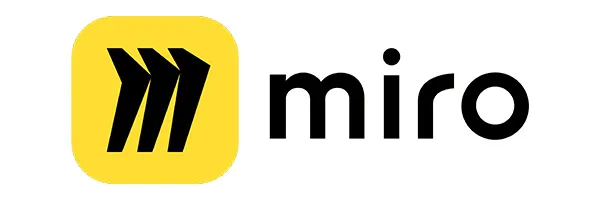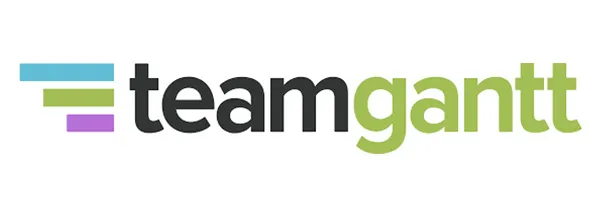Accelo Acquires Forecast, Adding Depth to AI and Capacity Planning Capabilities
Read the Press Release



Visualizing an entire project is crucial for its successful completion. But if you’re using a static tool to monitor and update individual task progress, you’ll never quite achieve a real-time bird’s-eye view.
Instead of spinning your wheels with manual methods of project management, consider switching to a tool that can display project information in a way that improves visibility and accountability for every stakeholder. One that fits the bill is a Gantt chart.
Gantt charts are smart project management tools that intuitively track where you are and what needs to be done in a specific project.
Named after Henry Gantt, the mechanical engineer who popularized them in the 1910s, Gantt charts are essentially horizontal bar charts that provide a graphical representation of a project schedule. They were inspired by the harmonogram, a bar chart concept used by Polish engineer Karol Adamiecki, in the late 1800s.
Along with breaking projects into small, easy-to-swallow pieces with checkpoints along the way, Gantt charts can be dynamic tools that adapt as a project evolves. The smartest Gantt charts automatically update project timelines when upstream dependencies have been met, so all you need to do is focus on the task at hand.
Gantt charts are far more than just a list of tasks; they’re used to allocate resources, manage timeframes and synchronize the various activities that constitute a project. Some teams use them to identify critical paths — sequences of tasks that determine the project’s duration — and to adjust workflows to accommodate changes and delays.
Project managers often apply a Gantt chart in project planning to generate a holistic view of the project’s lifecycle. This helps them see how tasks overlap and relate to one another, making it easier to assign tasks and coordinate deadlines with simultaneous projects.
The Gantt chart, because of its presentation of facts in their relation to time, is the most notable contribution to the art of management made in this generation.
Henry Wallace Clark, 1922
<10-profitability-essentials>
The detailed breakdowns and clear timelines you get from a Gantt chart can maintain project efficiency and help you provide more transparency to everyone involved. Let’s look at how Gantt charts help teams track progress and execute on even the largest and most intricate projects.
A Gantt chart looks like a roadmap, complete with predetermined pitstops (milestones). This presentation makes it immediately apparent where your project stands in relation to the initial timeline. Start dates, end dates and task duration are easily accessible, which gives an entire team the same visibility and the information to adjust the schedule proactively.
Some stakeholders aren’t involved in the day-to-day of a project, yet they require a clear understanding of project status. The color-coded bars in Gantt charts give them a simple way to view different stages of task completion. They can thus monitor progress and make informed decisions without getting entangled in the minutiae.
The true test of a project management tool is its capacity to handle complex projects efficiently. Gantt charts are exceptionally well-suited for this challenge. Large projects become a timeline of smaller, more manageable tasks, which makes it feasible to look at all of the components and deliverables in the bigger picture. Complexity doesn’t have to translate into confusion when you use a Gantt chart properly.
Role clarity is vital for team coordination, and Gantt charts are a great way to display and define roles against a project timeline. Each team member’s responsibilities are associated with specific tasks, so there’s no uncertainty about who’s doing what. This clarity prevents task duplication and oversight and gives each person a better sense of how they’re contributing to broader project goals.
Dependencies are key because without considering how the completion of one task impacts the start of another, you’re at risk of major bottlenecks. Compared to a list view, the task bars on a Gantt chart offer a more intuitive way of seeing how tasks impact each other.
READ NEXT: Project Management KPI Examples for Client Work
There are many different project management methodologies, and Gantt charts can work well with several of them. Let’s look at how project managers might use this helpful tool in two of the most popular approaches to project management.
In waterfall project management, Gantt charts shine by turning a big project into a sequential series of tasks and subtasks. This method is linear and phase-based, so each phase must be completed before the next one begins. Using a Gantt chart can help project managers who follow the traditional waterfall method define clear-cut stages and establish a fixed project schedule.
Agile project management is a more flexible methodology. While Gantt charts are objectively linear, they can accommodate the iterative nature of agile projects. Agile focuses on sprints, or short work cycles, and a Gantt chart can be used to track progress over multiple sprints. In the context of software development, they can help teams visualize release planning and feature rollouts to align with a product roadmap.
Curious about how to build this project planning tool from scratch?
Begin by inputting the components of a Gantt chart: task names, start and end dates, task duration and, sometimes, responsible parties. You’ll plot tasks along the horizontal axis, which is divided by days, weeks or months. This is akin to laying out the beginning, middle and end of your project’s story.

Some Gantt chart software will allow you to include milestones — major events or completion points — and represent them with a symbol that stands out from the rest of the task bars.
Furthermore, some project managers may want to continue by customizing the work breakdown structure (WBS) of the chart. This is a hierarchy of the total scope of work, and it may include dependencies and task constraints, resources and a list of deliverables.
Once all of your project tasks are in your chart, you can play around with the interactive elements: Shorten or extend the duration of a task and watch it automatically update the entire project timeline. It’s important to understand how your particular Gantt chart tool works before adjusting any tasks or settings.
As your team proceeds through a project and checks off tasks, you’ll experience the benefits of a Gantt chart’s at-a-glance nature. A vertical line will delineate where your team stands in the project timeline.
Here are a few use cases for Gantt charts in a service business context:
Gantt chart examples
You’ll find many Gantt chart templates online, but it can help to see some premade examples to get a better visual understanding of how to apply the tool to your business. Explore these Gantt chart components and examples from Canva.
Use the following overviews to explore five options for Gantt chart tools that could help your service business manage projects more efficiently.

Accelo is a cloud-based client work management platform designed to help professional services firms, including accounting firms, manage client relationships from prospect to payment. The platform provides customizable solutions to expand visibility, improve collaboration and increase profits.
Accelo offers five pricing plans that scale with your business, from a self-serve plan for managing client information, tasks and communication all the way to the Elite tier, which includes all quote-to-cash features, premium support and more.

GanttPRO is a robust project management software with a focus on Gantt charts for tracking project progress. The tool offers task, cost, resource and portfolio management, team collaboration and time-logging features.
GanttPRO offers four pricing tiers, with a five-user minimum for each:

Part of the tried-and-true Google Workspace, Google Sheets is an easily accessible alternative to Microsoft Excel. Its “Timeline View” is essentially a Gantt chart.
Google Sheets is free with a Google account, although businesses can pay for their teams to have access to a company Google Workspace account to link contacts, calendars and more.

Miro is a visual workspace built to help teams collaborate. It offers conferencing tools, document sharing and editing, campaign development tools and other project planning features.
Miro has a free version with limited features, plus three additional tiers:

TeamGantt is a project collaboration software that offers advanced Gantt chart functionality, in addition to supporting project management tools, such as task management and file sharing.
TeamGantt prices its product so that you only pay for managers. Its tiers are as follows:
Gantt charts are a powerful representation of how the pieces of your work fit together. They can be motivating and useful for many different project contributors.
If you haven’t tried managing projects using this flexible tool yet, why not explore what it can do to make your client projects more efficient and visible? Try out Gantt charts, plus many other features for your client work management, in a free trial of Accelo.

